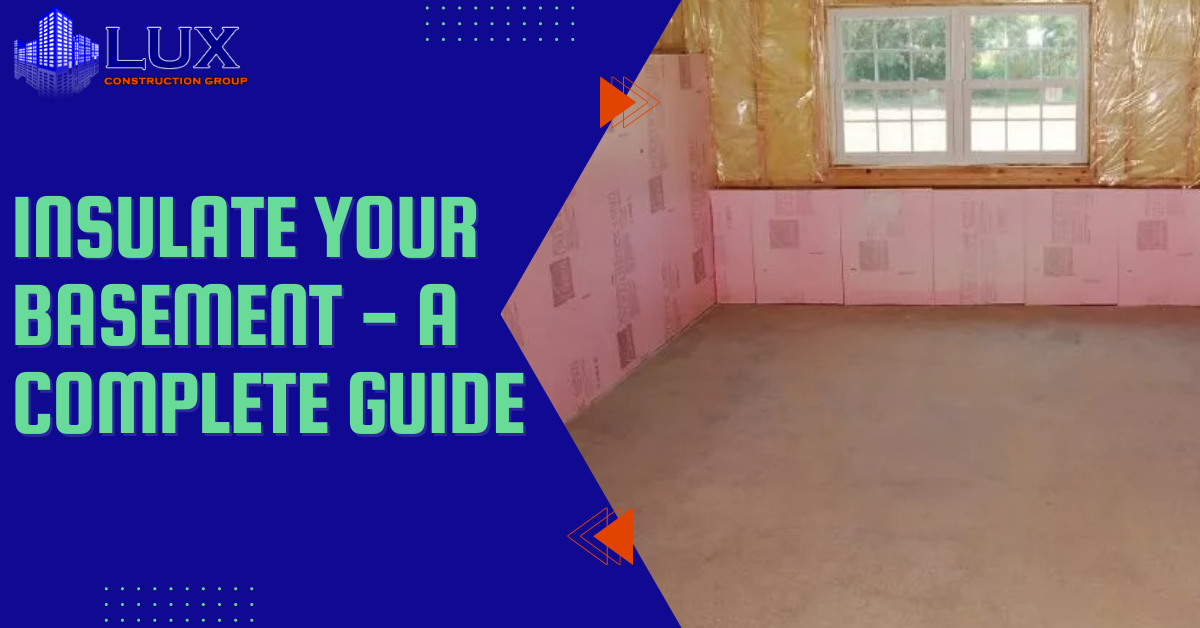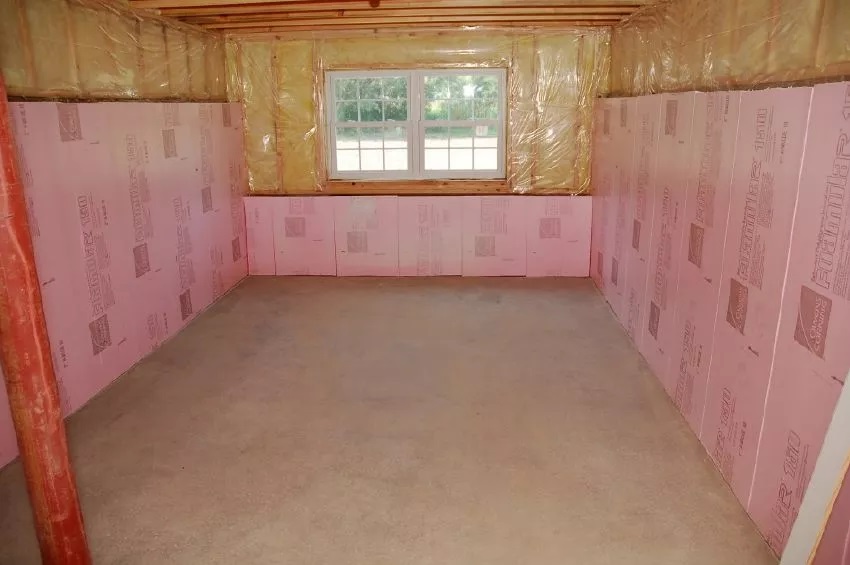As the trend of building finished basement is in demand, building an insulated basement is prevalent in areas like Los Angeles.
Insulation can substantially lower your heating and cooling costs because it slows heat transfer through your masonry foundation walls.
Insulating basement walls is a big job for which you need to take the help of experienced engineers. Also, the construction company’s exclusively building the basements can help you do the best insulation.
Here we provide a step-by-step guide to getting the basement insulation done using the high- quality material and at an affordable price.
Why Use Basement Insulation?
Moisture and airflow are the two most important factors before we opt to insulate the basement walls.
To ensure the dryness of walls, conduct a simple test using plastic sheeting and duct tape. Tape a small piece of plastic sheeting to a bare concrete wall with an impermeable duct tape border and wait 48 hours. After sufficient time, check for the moisture.
Even if there is no moisture at present, you can avoid wet, smelly, and muddy walls by covering the walls with high-quality insulating material.
Several reasons can justify your insulation project but some of the essential reasons include:
- If there are high heating or air-conditioning bills.
- The floor gets cold in winters.
- The temperature of the walls varies frequently.
- If there are dark spots on the ceiling and outside walls?
- There are air-conditioner ducts above the basement area.
Benefits of Wall Insulation in Basement
The basement construction can turn into a lively space if you take all the precautionary measures to build it wisely. Insulating the walls and ceiling is one of the methods. As the cost of insulation is high, we must know the benefits of insulating basement walls. Some of the benefits include:
- Minimizing heat loss by acquiring thermal stability.
- Reducing basement dampness from moisture intrusion.
- Preventing condensation and saving energy.
- Preventing Freezing of Water Pipes.
- Reducing energy swings in a building’s HVAC system.
- Improving noise abatement by adding more living space!
Things to Consider for Basement Insulation
To enjoy an eco-friendly and less energy consumption in the basement area and attain consistent power to save your electronic home appliances, you need to maintain the proper insulation.
For this, you need to check the R-value of the insulating material. In warm climates, an R-value of at least 30 should be sufficient, and in colder climates, an R-value of at least 60 will be necessary.
Normally, a rigid foam insulation board, like molded expanded polystyrene (MEPS) or extruded expanded polystyrene (XEPS) is best for the basement walls.
Despite choosing the best material, insulation can become ineffective due to some flaws. To have the maximum effect, you can do the following:
Caulk and spray foam to plug any gaps or cracks between the masonry and the framing and around the pipes and wires will help in getting the greater insulating effect.
Cutting smaller chunks of the foam and placing them in the partitions with glue tightly can reduce the moisture level. Make sure to use the smaller chunks for rigid foam insulation.
After the rigid foam insulation, it’s time to frame out the walls. Place a chalk line four inches away from the wall, going all around the basement. Then use two-by-fours to cut out top and bottom plates to fit. You can use composite decking material or weather-treated lumber for the bottom plates for added protection against moisture.
The next step would be blocking the first-floor joists. To do so, cut two-by-fours to the appropriate length to fit between the exterior wall and the first-floor joist. Place them at intervals of three feet, going all the way around the basement walls.
Use a hammer drill and concrete screws to anchor the bottom plate into the floor, and screw the top plate to the blocks you installed in the last step.
Now that your studs are in place, install your fiberglass batt insulation. This type of insulation, also known as blanket insulation, comes in rolls. Make sure to use safety equipment, including gloves, a mask, and goggles, when handling fiberglass insulation.
Step-by-Step Basement Insulation Installation
The first step is to divide the walls into small slots and make them ready for the foam installation. You can also build a panel to the exact wall size, fix the foam with adhesive and once all the panels are ready, fix them with walls.
Then you’ll make a wood grid to hold the drywall in place. To begin, measure three inches from the top and bottom of the room’s floor and ceiling. Draw five equidistant horizontal chalk lines across the polystyrene panels using these measurements.
This will serve as a blueprint for constructing the grid. Then, using a 1×3 spruce board, trace the chalk lines you’ve drawn.
Drill 5-inch holes through the 1×3 and into the concrete wall with a hammer drill and a 3/16-inch masonry bit. The 1x3s will be secured by 4-inch-long spring spikes, which resemble nails but have no point and a kink at the tip. This serves as a spring, straightening out and anchoring the spike into the ground.
Do’s and Don’ts of Basement Insulation
To insulate the basement, expertise level skills are required. Here are some of the dos and don’ts that will help you do quality basement construction.
Do’s
- Do pull a permit before taking the basement insulating project.
- Always go for the inspection by a renowned construction company and check the issues with the basic foundation of the basement such as wiring, drainage, electric connections, sewage pipes, and so on.
- Consult the construction company nearby and discuss your plans.
- Compare the cost of the insulating basement along with the repairing cost.
- To measure and cut the fiberglass batt for an exact fit.
- Do notch fiberglass batts around electrical boxes.
- Do buy unfaced friction-fit batts.
- Do seal around window and door jambs.
Don’ts
- DON’T finish walls until the basement is dry.
- DON’T forget to install an egress window if you’re adding a bedroom.
- DON’T build “tip-up” walls if the concrete floor is out of level.
- Don’t stuff full-width batts into spaces that are too narrow.
Lastly, don’t just go by the cost of basement insulation. It is always on the higher side if you are using good insulating material. The thermal insulation material requires maintenance which costs more than installation depending on the area covered.
However, improper insulation could be dangerous therefore hiring an experienced company is the prime requirement. Also, If you have drain cleanouts, ductwork, valves, breaker boxes, and the like in your basement, you will need to frame around these features so that you can still access them.
Most contractors will box out ductwork behind a soffit and frame out around cleanouts, valves, breaker boxes, and other features to install access panels.
Choose the Best Basement Construction Contractors
Depending on the construction type, basement construction, remodeling, renovation and insulation can become challenging. A good option is to choose a construction company that knows the specialized basement construction in Los Angeles.
Some of the reasons to hire the top-rated contractors to do the insulation job are:
- To do the thermal capacity checking.
- To cover up the flaws by taking extra precautions while executing the insulating plan in the basement.
- To ensure the moisture control mechanism by taking precautionary measures.
Once the insulation project is completed, it’s important to regularly inspect the basement to avoid potential problems, such as leaks, condensation, termites, and mold growth.
Therefore, choosing a contractor that can provide maintenance services would be a wise step. In the city of Los Angeles, the Lux construction group has completed several finished basement projects within a time frame and at the affordable price.
Request for a free consultation and quote to build the superior quality basement with insulation done in a cost-saving mode.





